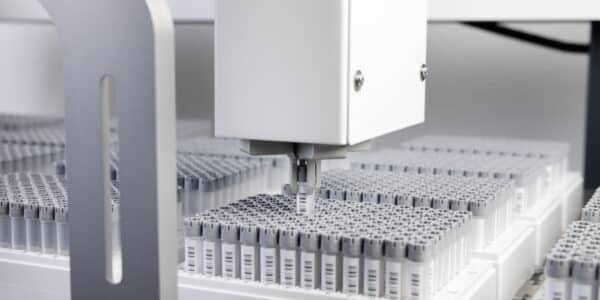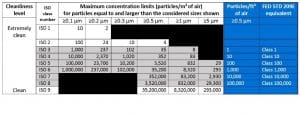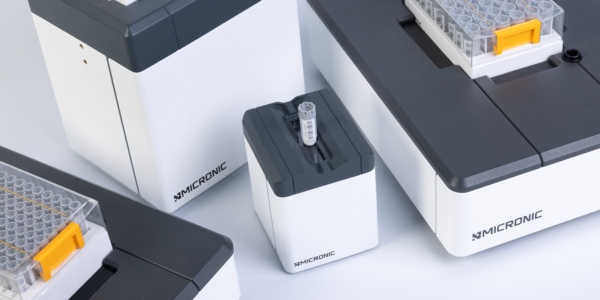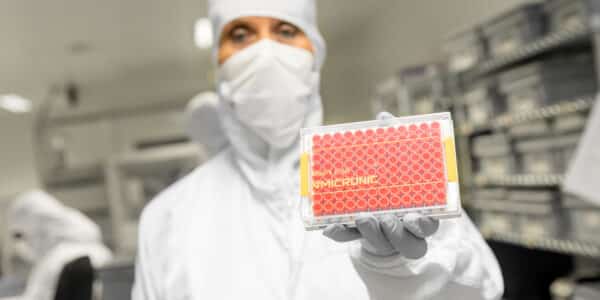

How do Cleanrooms differ in their cleanliness?
From 2001, an ISO Classification is used to determine the level of cleanliness of cleanrooms. The system comprises of nine classes. Since the foundation of Micronic, labware products have been manufactured and assembled in certified class 7 cleanroom environments in the Netherlands and the United States. But what is a cleanroom actually and how does a class 7 cleanroom compare with the other classes? Read through in this blog post and learn more about cleanrooms.
What is a Cleanroom?
A cleanroom is defined by the ISO standard 14644-1 as “A room in which the concentration of airborne particles is controlled, and which is constructed and used in a manner to minimize the introduction, generation, and retention of particles inside the room and in which other relevant parameters, e.g. temperature, humidity, and pressure, are controlled as necessary.” [1] The difference between a cleanroom and a normal home is the number of times each hour filtered outside air replaces the existing volume in a building or chamber. Within a normal home, an air-conditioner can change room air 0.5 to 2 times per hour. In a cleanroom, depending on classification and usage, air changes anywhere from 10 to more than 600 times an hour, this is also known as the air-change rate, or ACR. The ACR is taken into account when determining the class of the cleanroom. However, this varies per cleanroom due to differences in several variables such as internal equipment or staffing. [2] So how is a cleanroom classified to a certain class?
ISO Classification System
In 2001 a new classification system was developed for the classification of cleanrooms: the ISO 14644-1 standard. Before that, the Federal Standard 209E was used for the cleanroom classification. The main difference between the two is that the ISO standard has more cleanroom classes compared to the Federal Standard 209E and the ISO standard is measured in cubic meters where the Federal Standard was measured in cubic feet. [3]
The cleanrooms are classified according to the level of cleanliness of the air inside them. The class which is given to a cleanroom complies with the quantity and size of particles per volume of air. The ISO classification system ISO 14644-1 comprises of cleanroom classes ISO 1 till ISO 9, with ISO 1 being the “cleanest’ and ISO 9 the “least cleanest” class. The two most common classes are ISO class 7 and ISO class 8. [4]
The basis of cleanroom standards is the micrometer, or micron for short (µm), which is the size of the particles to be filtered. The cleanrooms are classified by how clean the air is, according to the quantity and size of particles per volume of air. The cleanroom classification table shows the maximum concentration limits (particles/m3 of air) for particles equal to and larger than the considered sizes shown.[4]
In the table you can see how clean the air must be to get to a certain class. [4] Micronic owns multiple certified class 7 cleanrooms, so how is a class 7 cleanroom build and what is needed to be a class 7 cleanroom?
ISO Class 7 Cleanroom
As seen in the cleanroom classification table, for a ISO class 7 certified cleanroom the concentration of particles of >0.5 µm and above should be below 352.000, for particles of 1 micron and above 83.200 or lower, and for particles of 5 microns and above 2.930 or lower. The particles smaller than 0.5 microns are not taken into consideration. This has to do with the fact that the respective concentrations are too high to be tested. [4]
ISO class 7 is met by the air cleanliness in the cleanroom, this is achieved by passing the air through HEPA filters. The more often the air passes through the HEPA filters, the fewer particles are left in the room air. The volume of air filtered in one hour, divided by the volume of the room gives the number of air changes per hour. For ISO class 7 there are approximately 30-60 air changes per hour. This can be used as a rule of thumb but it should be measured by an expert. It varies between cleanrooms, due to the size of the room, the number of personnel, the equipment and the process involved.[4]
Differences between a Class 7 and Class 8 Cleanroom
The main differences between the cleanroom classes is the average number of air changes per hour. The more often this happens, the ‘cleaner’ the cleanroom gets. As mentioned above in a class 7 cleanroom, the air changes 30-60 per hour. For a class 8 this is 10-25 times per hour. So how can one make their cleanroom ‘cleaner’? Certain factors need to be taken into account when someone wants to have a better classification. The rule of thumb is that you should not skip over more than one class when you move towards a cleaner room (for example, from ISO 7 to ISO 6, not from ISO 8 to ISO 6). So when there is a class 8 cleanroom, you can enter via a class 9 room and for an ISO class 7 cleanroom the gowning room and airlock should be a class 8 room already. [4]
References
[1] What is a cleanroom? By Mercart Inc. at https://www.mecart-cleanrooms.com/what-is-a-cleanroom/
[2] M. Meadows: FS209E and ISO Cleanroom Standards at https://blog.gotopac.com/2017/01/05/fs209e-and-iso-cleanroom standards/
[3] FS209E and ISO Cleanroom Standards by Terra Universal Inc. at https://www.terrauniversal.com/blog/fs209e-and-iso-cleanroom-standards/
[4] Cleanroom classifications (ISO 8, ISO 7, ISO 6, ISO 5) by Mercart Inc. at https://www.mecart-cleanrooms.com/learning-center/cleanroom-classifications-iso-8-iso-7-iso-6-iso-5/


